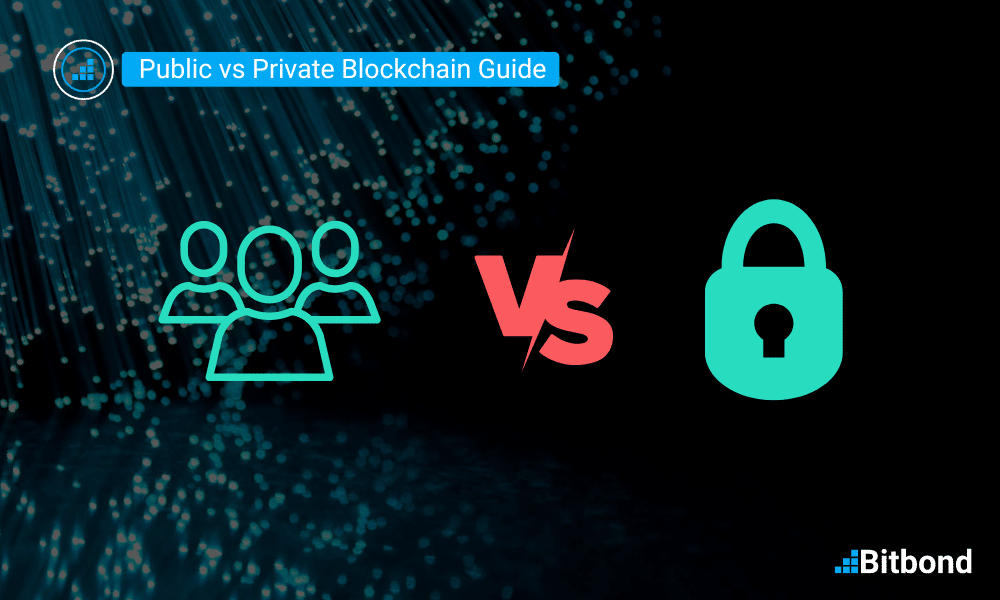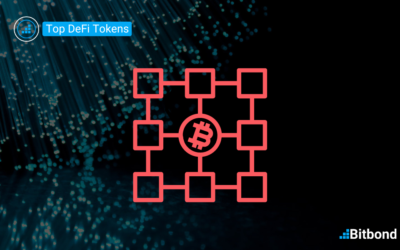Table of Contents
What are differences between public blockchains vs private blockchains?
This document compares the characteristics of different blockchain protocols for the tokenization of assets as well as other assets. Additionally, we will evaluate the advantages and disadvantages of public blockchains vs private blockchains. Proving ownership in an asset such as a security via a digital token (tokenized security) means using a form of distributed ledger technology. Distributed ledgers rely on a specific blockchain protocol. There are public blockchains which can be accessed by everyone via the internet (permissionless) and private blockchains that can only be accessed with prior permission from the organisations operating that private blockchain.
A. Summary of Blockchain features
The most famous public protocols for tokenized securities are Stellar and Ethereum. The most famous private installations are based on Hyperledger Fabric, R3 Corda and the private Ethereum version of the Ethereum Enterprise Alliance.
| FEATURE | PUBLIC | PRIVATE |
| Network | Existing public network of nodes is utilized | Private chain or sidechain has to be set up and nodes operated by participating organizations |
| Secondary market trading and liquidity | Relatively high due to market participants on centralized and decentralized exchanges as well as over-the-counter (OTC) trades | Limited to those exchanges where the issuer lists the security and the exchange participates in the permissioned network |
| Scalability | Depends on the protocol and its further development, limited by consensus mechanism – Stellar can currently process 1,500 TPS (transactions per second) which is orders of magnitude higher than the current ~25 TPS of Ethereum and at times has seen network congestion | High due to the fact that consensus mechanism is based on trust between nodes instead of computationally expensive calculations, TPS are not limited other than by computational resources of node operators |
| Compatibility | For popular protocols such as Stellar and Ethereum compatibility is high because many wallet providers and exchanges support assets that are issued on these protocols | Very low, if someone wants to transact with assets issued on a private permissioned chain they need to be onboarded to the private network and ideally even run a node on this network |
| Security | High based on trustless and immutable transaction ledger operated by hundreds or thousands of decentralized nodes | Relatively low due to central points of failure / possible manipulation of transaction history by bad actors due to limited number of nodes |
| Privacy | Pseudonymous – ownership transfers of tokens are publicly visible, identities / participating organizations are not known | Transactions only visible to network participants with optional privacy extensions |
| Transaction fees | Fees per transaction are charged to the sender of a token to prevent spam of the network, significantly below USD 0.01 per transaction on Stellar, higher on other protocols | Usually free but operators of nodes bear the costs of running and maintaining the network |
| Consensus algorithm | Proof-of-work (PoW) | Federated Byzantine Agreement (FBA) |
| Cost of operation | Near zero cost to operate due to ready made publicly accessible protocol | Relatively high since chain has to be maintained by participating organizations, requires management attention and consensus among consortium |
| Implementation speed | Fast due to defined token standards | Slow due to required decisions of chain features and implementation thereof |
B. Evaluation of Public Chains vs Private Chains
Public Blockchains
| Advantages | Disadvantages |
| Immutable transaction ledger with no central point of failure and maximum security | Risk of network congestion mainly in the case of Ethereum until the protocol has been upgraded for a higher transaction throughput of which the timing is uncertain |
| Doesn’t require trust between participating parties | Despite being generally low, transaction fees need to be paid and factored into the setup |
| Global secondary market potential with more liquidity and traders from many different countries due to high compatibility | |
| Due to universalness of public chains, tokenized securities can be traded for other assets on the same chain such as fiat currency backed stable coins allowing instant delivery vs. payment (DvP) on the same chain and completely eliminating settlement risk | |
| Protocols are available publicly “off the shelf” at practically zero cost |
Private Blockchains
| Advantages | Disadvantages |
| Control over features of the protocol due to customizability of available installations | Lower security due to relatively small number of nodes which store a full copy of the transaction history (risk from bad actors as well as unintended human / technical errors) |
| Zero transaction fees | Require management attention and software development resources to get the installation into live production mode slowing down the process |
| Virtually no limit on transaction throughput and therefore highly scalable | Participating organizations have to run nodes to keep the network alive which requires the dedication of resources (software developers, hardware, management attention) |
| Governance mechanism has to be established that defines how decisions around further development and maintenance of the protocol is organized | |
| Limited secondary market liquidity due to near zero compatibility with existing wallets and exchanges |
C. Conclusion and recommendation on public blockchain vs. private blockchain
We recommend utilizing a public blockchain for the tokenization of assets. There are two main reasons for this recommendation.
Public blockchains have:
- All the necessary technical capabilities can be used as is. This means that the planning, set up and ongoing servicing of tokenized assets is not slowed down by dedicating attention, coordination and resources to the customization and maintenance of a private chain
- Faster speed to launch tokenized assets
- Lower costs
- Advanced security due to their decentralized nature, permissionless access and high level of compatibility
- Higher secondary market liquidity
Finally, the decision whether to tokenize securities on a public or a private chain can be evaluated similarly to a make or buy decision. “Making” an own chain (i.e. setting up a private one or developing a proprietary protocol) should only be the preferred way forward if the self-produced product is either better and or comes at a lower cost than alternatives from the market.
The strength of banks, issuers and exchanges usually comes from their access to clients and the trust they gain from being regulated entities / established companies and less from having expertise in the development of low level technical protocols. Therefore “buying” (i.e. building on top of and using an existing public chain) is the recommended way forward.




